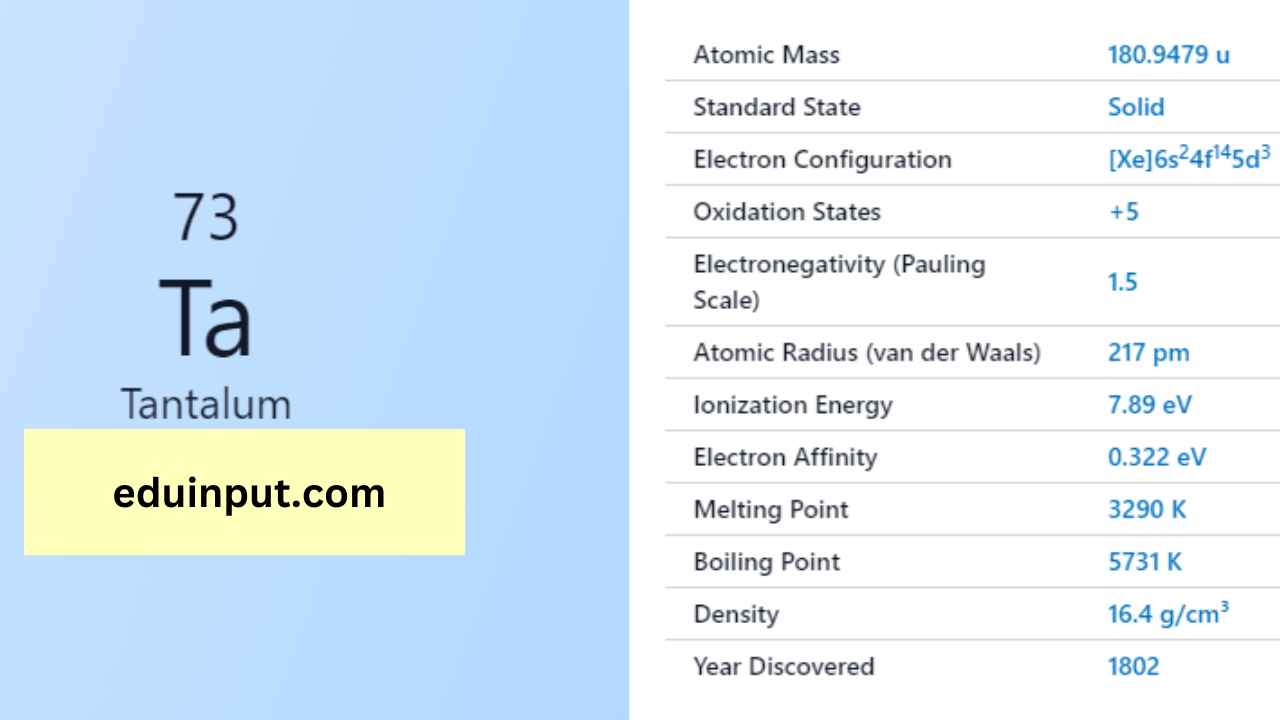Rubidium-Discovery, Properties, and Applications
Rubidium is a chemical element with the symbol ‘Rb’ and atomic number 37. It is an alkali metal and belongs to the same group as sodium and potassium. Rubidium is a soft, silvery-white metal that is highly reactive and can ignite spontaneously when exposed to air.

| Period in the periodic table | Value |
| Name | Rubidium |
| Symbol | Rb |
| Atomic number | 37 |
| Relative atomic mass (Ar) | 85.4678 g |
| Standard state | Solid at 298 K |
| Appearance | Silvery white |
| Classification | Metallic |
| Group in periodic table | 1 |
| Group name | Alkali metal |
| Block in the periodic table | 5 |
| Group in the periodic table | s |
| Shell structure | 2.8.18.8.1 |
| CAS Registry | 7440-17-7 |
Discovery
Rubidium was first discovered in 1861 by German scientists Robert Bunsen and Gustav Kirchhoff. They identified it as a new element in the mineral lepidolite, which is a type of mica.
Physical Properties
Rubidium is a soft, ductile metal that has a low melting point of 39.3°C and a boiling point of 688°C. It is a highly reactive element and can ignite spontaneously when exposed to air. Rubidium is also one of the most reactive metals with water and reacts vigorously to produce rubidium hydroxide and hydrogen gas.
Chemical Properties
Rubidium is a highly reactive element and reacts with a variety of other elements and compounds. It reacts vigorously with water to produce rubidium hydroxide and hydrogen gas. It also reacts with oxygen, halogens, and other elements to form a variety of compounds.
Facts
- Rubidium is a relatively rare element and is the 16th most abundant element in the Earth’s crust.
- Rubidium is commonly used in atomic clocks, as it has a stable isotope that can be used to measure time accurately.
- Rubidium is also used in the production of photocells and vacuum tubes.
- Rubidium has some potential medical applications, including the treatment of depression and Parkinson’s disease.
Applications
Rubidium has a range of applications in various industries. Some of the major applications of rubidium include:
- Atomic clocks: Rubidium is used as a timekeeping element in atomic clocks, as it has a stable isotope that can be used to measure time accurately.
- Photocells: Rubidium is used in the production of photocells, which convert light energy into electrical energy.
- Vacuum tubes: Rubidium is used in the production of vacuum tubes, which are used in electronic devices such as televisions and radios.
- Medical applications: Rubidium has some potential medical applications, including the treatment of depression and Parkinson’s disease.
Rubidium is a highly reactive element with a range of applications in various industries. Its unique physical and chemical properties make it a valuable element for use in atomic clocks, photocells, and vacuum tubes. Despite being a relatively rare element, rubidium has potential medical applications that are currently being researched.







Leave a Reply